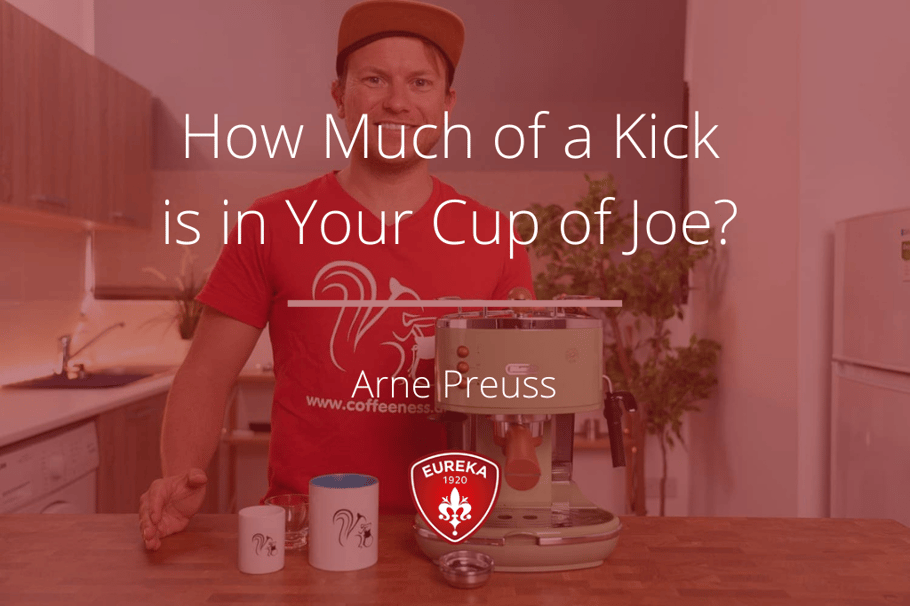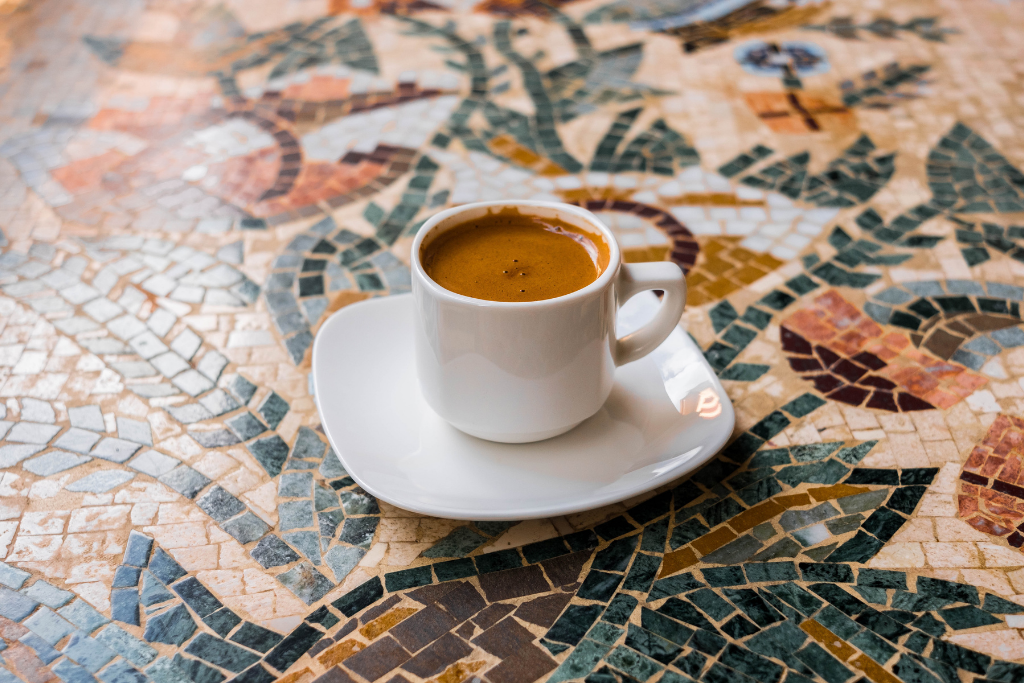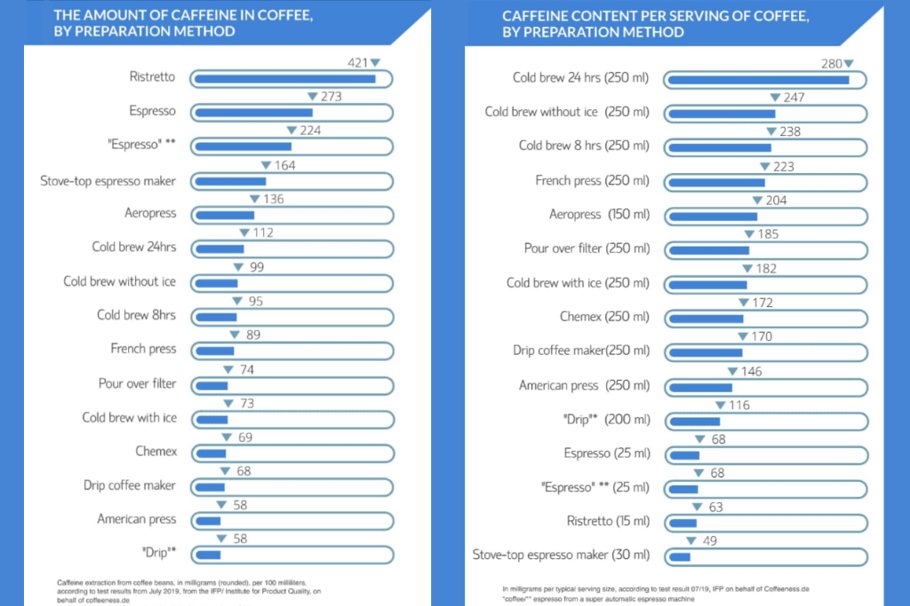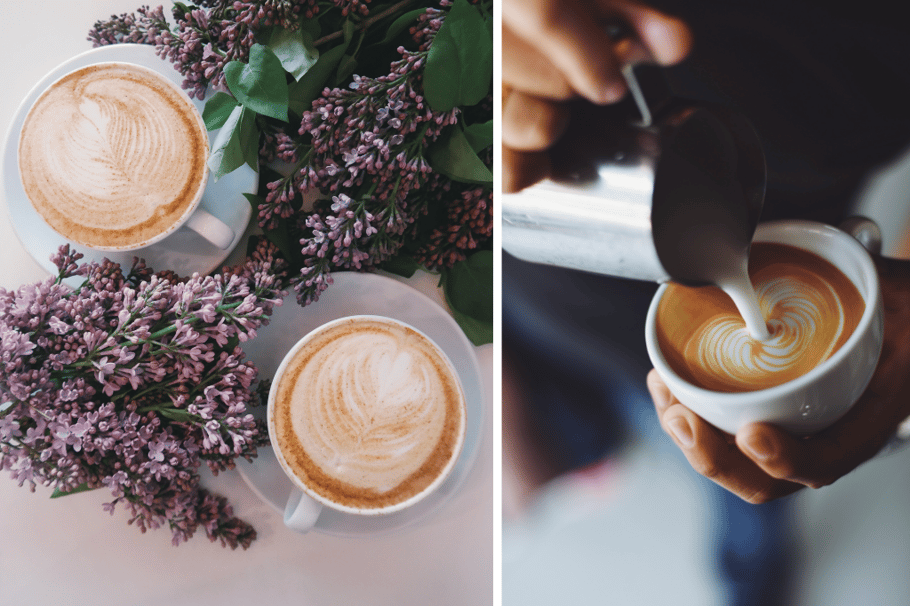
Take a look online and you’ll find plenty of claims about how much caffeine is in your favorite latte or that good, ‘ole-fashioned espresso, but nobody seems to know where these numbers really come from or how accurate they are. And, for many people, understanding how much caffeine is in your coffee is more than just a curiosity – it’s a health concern.
For coffee lovers everywhere (including myself), I have decided to do the legwork and actually test the caffeine content in everyone’s favorite drink. Using a big batch of beans and the scientific support from my friends at the Institute for Product Quality (IFP), I made coffee in 15 different ways and tested each. You can read more about my testing process here, but for now, here’s a quick summary of my findings.

What Type of Coffee Has the Most Caffeine?
Most people have the same burning question, and I won’t make you wait for the good stuff: the ristretto has the highest caffeine content by preparation method at 421 grams total and 63.15 grams for the average serving size (15 ml).
This may seem odd considering ristretto gets made with less water and there’s less contact time with the grounds, but you also won’t get your caffeine buzz all at once.
It will take 4.43 ristrettos to get the same caffeine kick that you’d get with a single cup of cold brew that’s been steeped for twenty hours, which is far more digestible for most people.
So, when it comes to the most caffeine per serving size, cold brew definitely takes the crown at 95.2 grams per 100 ml and 238 grams for the average serving size (250 ml).
Using the preparation method as our basis, here’s how all 15 types of coffee managed to make out in the experiment, with also a closer look at caffeine content based on the preparation method and serving size:

While ristretto and 24-hour cold brew sit at the top of our list, drip coffee with a super-automatic espresso machine and an American press came in last at just around 58 grams per 100 ml.

Our Other Findings
We have already covered the basics above, but here are some other interesting findings from our experiment:
- The two most important factors to affect caffeine content were time and volume, while pressure, temperature, and the amount of coffee grounds weren’t quite as crucial.
- On average, most brewing methods only release around 10% of the caffeine in your beans, although brewing ristretto earns you around 31%.
- Super-automatic coffee machines don’t brew as much of a caffeinated kick as you might think.

The Final Verdict
While it’s still important to remember that caffeine content will always vary from bean to bean, our little coffee experiment did give us some numbers to work with – and a better understanding of our general coffee consumption.





